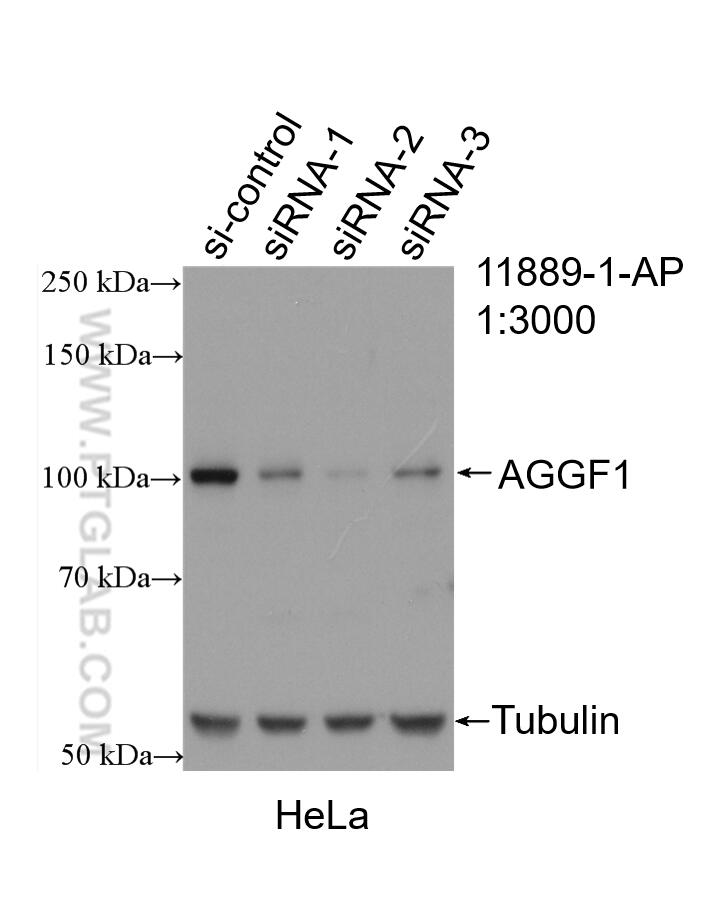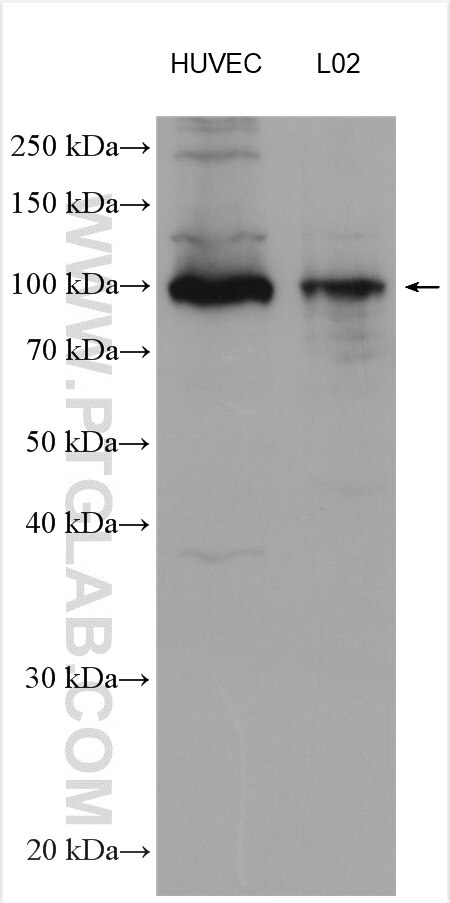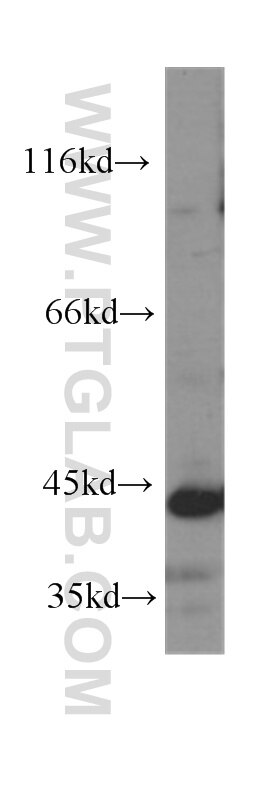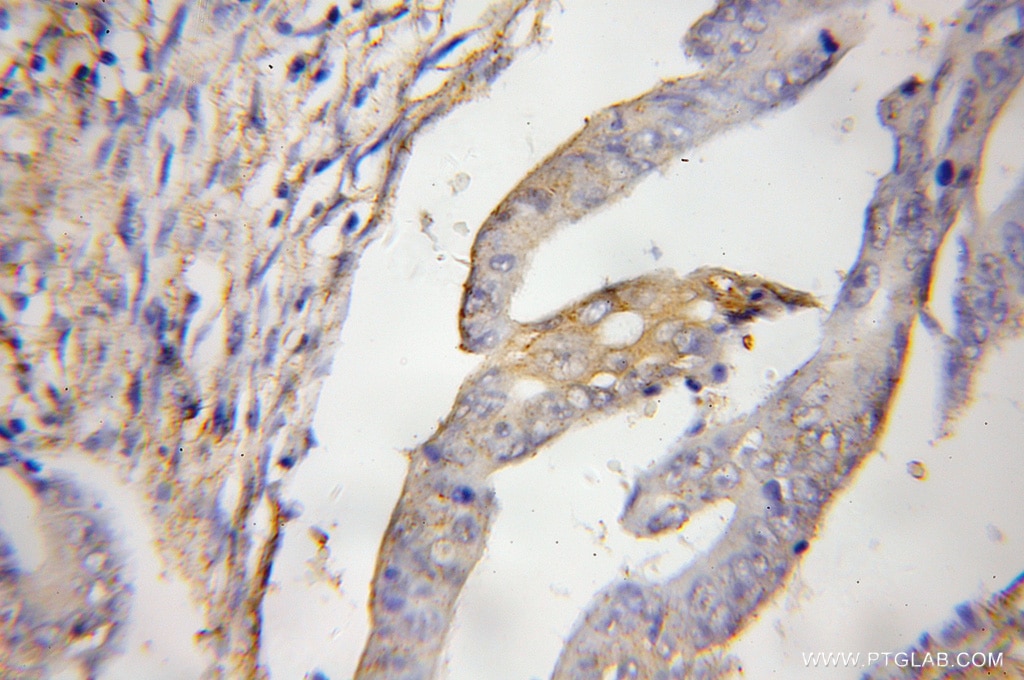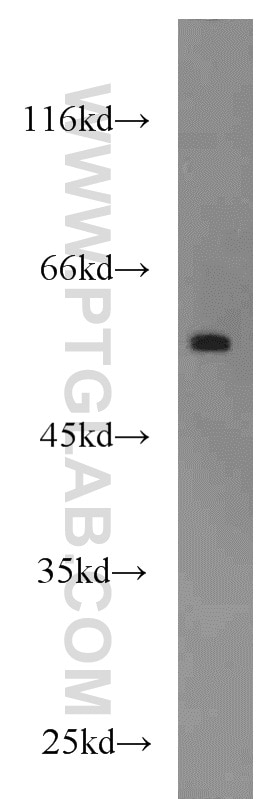- Featured Product
- KD/KO Validated
AGGF1 Polyklonaler Antikörper
AGGF1 Polyklonal Antikörper für WB, ELISA
Wirt / Isotyp
Kaninchen / IgG
Getestete Reaktivität
human, Maus, Ratte und mehr (3)
Anwendung
WB, IP, IF, IHC, ELISA
Konjugation
Unkonjugiert
Kat-Nr. : 11889-1-AP
Synonyme
Galerie der Validierungsdaten
Geprüfte Anwendungen
| Erfolgreiche Detektion in WB | HUVEC-Zellen, HeLa-Zellen, L02-Zellen |
Empfohlene Verdünnung
| Anwendung | Verdünnung |
|---|---|
| Western Blot (WB) | WB : 1:1000-1:8000 |
| It is recommended that this reagent should be titrated in each testing system to obtain optimal results. | |
| Sample-dependent, check data in validation data gallery | |
Veröffentlichte Anwendungen
| KD/KO | See 8 publications below |
| WB | See 18 publications below |
| IHC | See 8 publications below |
| IF | See 5 publications below |
| IP | See 1 publications below |
Produktinformation
11889-1-AP bindet in WB, IP, IF, IHC, ELISA AGGF1 und zeigt Reaktivität mit human, Maus, Ratten
| Getestete Reaktivität | human, Maus, Ratte |
| In Publikationen genannte Reaktivität | human, Maus, Ratte, Zebrafisch, Rhesusaffe, Makake |
| Wirt / Isotyp | Kaninchen / IgG |
| Klonalität | Polyklonal |
| Typ | Antikörper |
| Immunogen | AGGF1 fusion protein Ag2497 |
| Vollständiger Name | angiogenic factor with G patch and FHA domains 1 |
| Berechnetes Molekulargewicht | 714 aa, 81 kDa |
| Beobachtetes Molekulargewicht | 84-100 kDa |
| GenBank-Zugangsnummer | BC029382 |
| Gene symbol | AGGF1 |
| Gene ID (NCBI) | 55109 |
| Konjugation | Unkonjugiert |
| Form | Liquid |
| Reinigungsmethode | Antigen-Affinitätsreinigung |
| Lagerungspuffer | PBS mit 0.02% Natriumazid und 50% Glycerin pH 7.3. |
| Lagerungsbedingungen | Bei -20°C lagern. Nach dem Versand ein Jahr lang stabil Aliquotieren ist bei -20oC Lagerung nicht notwendig. 20ul Größen enthalten 0,1% BSA. |
Hintergrundinformationen
The angiogenic factor gene, AGGF1 (or VG5Q), is identified as a candidate susceptibility gene for Klippel-Trenaunay syndrome (KTS) which is a severe congenital disorder characterized by capillary malformations, venous malformations or varicose veins, and hypertrophy of the affected tissues. AGGF1 protein can bind to endothelial cells and promote cell proliferation. AGGF1 shows strong expression in blood vessels and is secreted as vessel formation is initiated. Regulation of AGGF1 by GATA1 may play roles in endothelial cell biology and angiogenesis. Catalog#11889-1-AP was validated by KO and KD methods in scientists' studies (PMID: 28153879; 27513923), and the observed MW is 84 kDa.
Protokolle
| Produktspezifische Protokolle | |
|---|---|
| WB protocol for AGGF1 antibody 11889-1-AP | Protokoll herunterladen |
| Standard-Protokolle | |
|---|---|
| Klicken Sie hier, um unsere Standardprotokolle anzuzeigen |
Publikationen
| Species | Application | Title |
|---|---|---|
Nat Commun A non-canonical pathway regulates ER stress signaling and blocks ER stress-induced apoptosis and heart failure. | ||
Mol Ther The 3' Untranslated Region Protects the Heart from Angiotensin II-Induced Cardiac Dysfunction via AGGF1 Expression. | ||
PLoS Biol Angiogenic Factor AGGF1 Activates Autophagy with an Essential Role in Therapeutic Angiogenesis for Heart Disease.
| ||
Arterioscler. Thromb. Vasc. Biol. Angiogenic Factor With G Patch and FHA Domains 1 Is a Novel Regulator of Vascular Injury.
| ||
Mol Ther Nucleic Acids circ-SHKBP1 Regulates the Angiogenesis of U87 Glioma-Exposed Endothelial Cells through miR-544a/FOXP1 and miR-379/FOXP2 Pathways. | ||
FASEB J Angiotensin II increases angiogenesis by NF-κB-mediated transcriptional activation of angiogenic factor AGGF1. |
